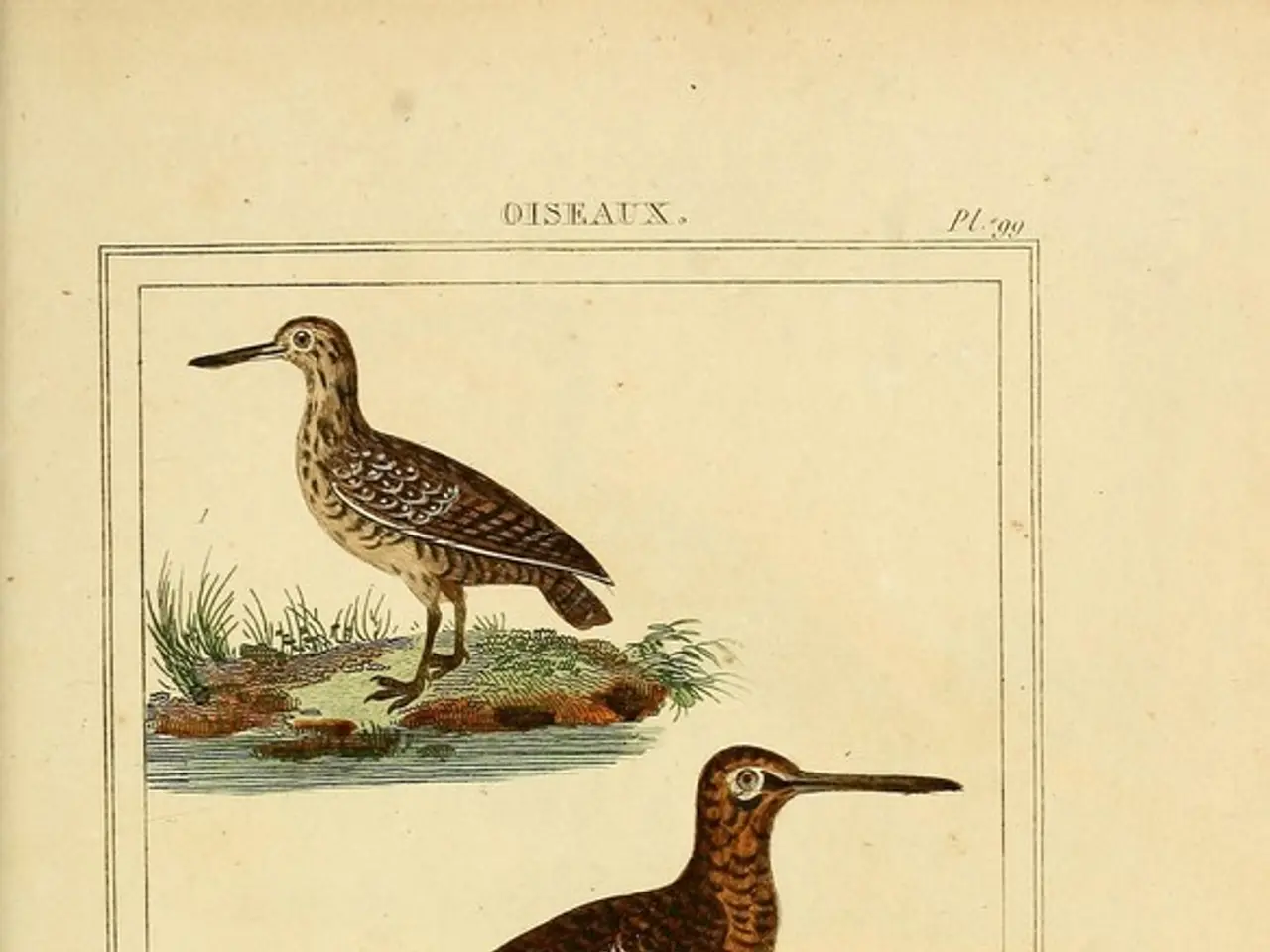Giant Moa: Fifth Largest Fowl to Roam Earth Returned from Extinction via Scientific Resurrection
In July 2025, the historic Moa De-extinction Project, a collaboration between Colossal Biosciences, the Māori-led Ngāi Tahu Research Centre, and filmmaker Sir Peter Jackson, is actively progressing. This groundbreaking initiative aims to bring back the extinct South Island Giant Moa, a massive flightless bird native to New Zealand that disappeared around 600 years ago due to overhunting and habitat changes following Polynesian settlement [1][2][4].
Colossal Biosciences is utilising advanced genetic engineering and de-extinction technologies, including sequencing and rebuilding full genomes from ancient moa remains. They have already begun sequencing the genomes for all nine moa species to aid in conservation and ecological restoration [1][3]. The project incorporates traditional Māori ecological knowledge and values, making it the first large-scale indigenous-led de-extinction effort, guided by the Ngāi Tahu Research Centre at the University of Canterbury [2][3].
Key components of the project include:
1. A multilateral strategic partnership involving Colossal Biosciences, the Ngāi Tahu Research Centre, and Sir Peter Jackson, who has contributed funding ($15 million) and DNA samples from moa bone collections [3][4]. 2. The development of a conservation action plan, risk evaluation, and identification of suitable rewilding sites for the restored moa within New Zealand's South Island (Te Waipounamu) [3]. 3. Ecological restoration efforts to rehabilitate potential moa habitats while supporting existing native species under Indigenous stewardship [3]. 4. The initiative aims to complete moa revival within about a decade, creating secure ecological reserves for these birds to thrive, which would also innovate conservation methodologies for other endangered species in New Zealand [4].
The Ngāi Tahu Research Centre will lead the Moa project as an extension of the Ngāi Tahu's longstanding involvement with species protection and ecological restoration. The project has already been able to hit the ground running due to the investment in Colossal's avian genomics group. The goal is to build genomes for all nine species of moa, including the South Island giant moa, Dinornis robustus [5].
The Moa project is not only significant for New Zealand but also for the global conservation community. The moa shaped New Zealand's grasslands and forests for millions of years, and their extinction had significant impacts on the landscape. The successful revival of the moa would not only symbolise a transformative approach to species restoration but also contribute to our understanding of these fascinating creatures [6].
References: [1] Colossal Biosciences. (2025). Moa De-extinction Project. Retrieved from https://www.colossal.bio/moa [2] Ngāi Tahu Research Centre. (2025). Moa De-extinction Project. Retrieved from https://www.ngaitahuresearch.ac.nz/moa-deextinction-project [3] Jackson, P., Lamm, B., & Ngāi Tahu Research Centre. (2025). Press Release: Moa De-extinction Project. Retrieved from https://www.pjaf.co.nz/news/moa-deextinction-project [4] BBC News. (2025). New Zealand's Giant Moa to be Brought Back from Extinction. Retrieved from https://www.bbc.com/news/world-asia-62254744 [5] Stuff.co.nz. (2025). Moa De-extinction Project: A Giant Leap for Conservation. Retrieved from https://www.stuff.co.nz/national/129539991/moa-deextinction-project-a-giant-leap-for-conservation [6] New Zealand Geographic. (2025). The Moa De-extinction Project: A New Era for Conservation. Retrieved from https://www.nzgeo.com/stories/moa-deextinction-project-a-new-era-for-conservation/
- The Moa De-extinction Project, a collaborative effort between Colossal Biosciences, Ngāi Tahu Research Centre, and Sir Peter Jackson, is utilizing advanced science and research, including genetic engineering and de-extinction technologies, to bring back the extinct South Island Giant Moa.
- This project is significant for the global conservation community, as it incorporates traditional Māori ecological knowledge and values, making it the first large-scale indigenous-led de-extinction effort.
- The project also aims to aid in medical-conditions research, as they are sequencing the genomes for all nine moa species, which can contribute to conservation and ecological restoration.
- The revival of the moa would not only symbolize a transformative approach to species restoration but also provide entertainment and educational opportunities, promoting environmental-science, technology, education-and-self-development, and lifestyle awareness.
- In sports, the successful return of the moa could even inspire new mascots or symbols for teams, celebrating New Zealand's rich biodiversity.




